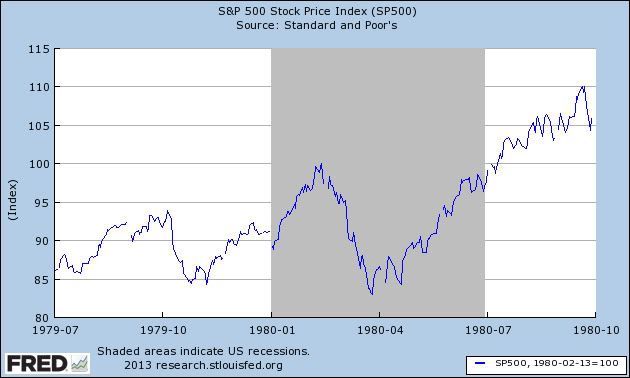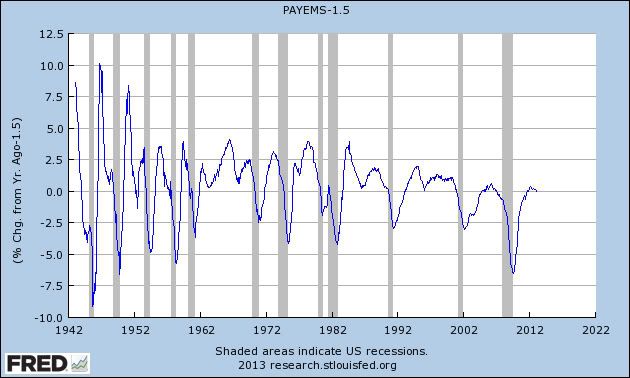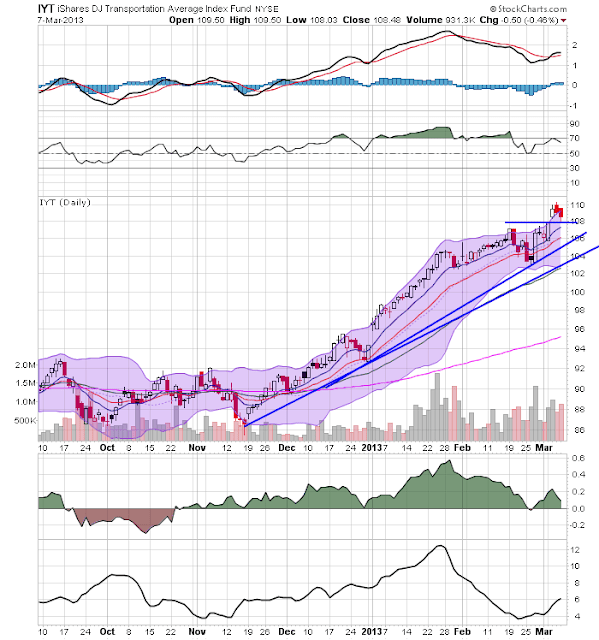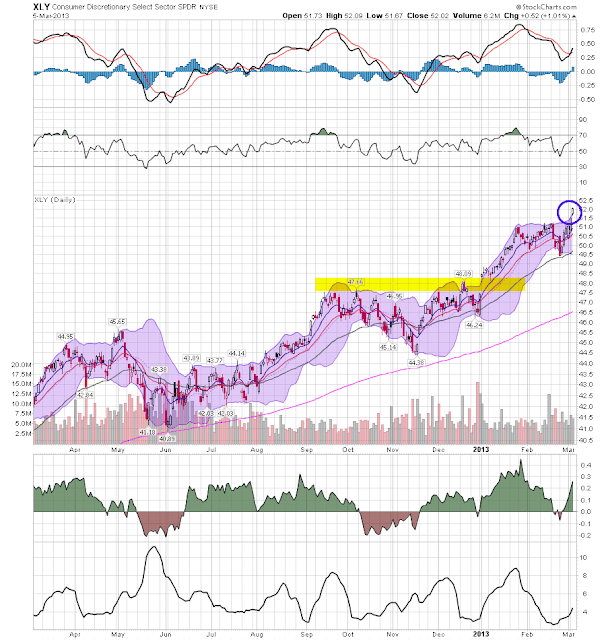- by New Deal democrat
Monthly data released in the past week was dominated by yesterday's payroll report, showing 238,000 jobs added, and both the U3 and broad U6 unemployment rates declining slightly to new post-recession lows. The participation rate remained generally flat. Other reports included the ISM services report, up and signalling good expansion in the services sector. Factory orders, however, declined. Customer credit increased, as did wholesale inventories.
Let me remind readers that this look at high frequency weekly data is not predictive, but attempts to capture the most up to the minute pulse of the economy in the present. As I've done for the last few weeks, due to the recent payroll tax increases, let's start again this look at the high frequency weekly indicators by checking what is happening with tax withholding:
Employment metrics
Daily Treasury Statement tax withholding
- $149.6 B (adjusted for 2013 payroll tax withholding changes) vs. $156.7 B, -4.5% YoY for the last 20 days. The unadjusted result was $172.1 B for a 9.8% increase.
- 340,000 down 4,000
- 4 week average 348,750 down 6,250
- up 1 to 90 w/w up 3.2% YoY
I am adjusting my YoY tax withholding figures to reflect the increase in personal withholding taxes. While the YoY collections are up substantially, they should be up over 15% to compensate for the tax increase. Since I can think of no reason why employment itself should have fallen off a cliff in January, it is very possible that there is a lag in the payment of withholding taxes with the new increase. If this hypothesis were correct, I would have expected tax withholding to be much more reliable by about now. So far, that isn't happening.
Consumer spending
- ICSC +0.2% w/w +1.8% YoY
- Johnson Redbook +2.2%YoY
- Gallup daily consumer spending 14 day average at $89 up approximately $20 YoY
Housing metrics
Housing prices
- YoY this week. +3.9%
Real estate loans, from the FRB H8 report:
- +0.3% w.w
- +0.5% YoY
- +2.4% from its bottom
Mortgage applications from the Mortgage Bankers Association:
- +15% w/w purchase applications
- +17% YoY purchase applications
- +15% w/w refinance applications
Interest rates and credit spreads
- 4.78% BAA corporate bonds down 0.09%
- 2.00% 10 year treasury bonds down -0.12%
- 2.78% credit spread between corporates and treasuries incrreased +0.03%
Money supply
M1
- +0.1% w/w
- -0.6% m/m
- +9.4% YoY Real M1
M2
- -0.2% w/w
- -0.1% m/m
- +5.1% YoY Real M2
Oil prices and usage
- Oil $91.95 up $1.27 w/w
- gas $3.76 down $0.02 w/w
- Usage 4 week average YoY +1.1%
Transport
Railroad transport from the AAR
- +600 or +0.2% carloads YoY
- +1400 or +0.8% carloads ex-coal
- +20,000 or +9.7% intermodal units
- +22,500 or +4.4% YoY total loads
- Harpex up 5 to 377
- Baltic Dry Index up 67 to 843
Bank lending rates
- 0.19 TED spread up +0.01 w/w
- 0.2000 LIBOR unchanged w/w
JoC ECRI Commodity prices
- down 0.87 to 126.74 w/w
- +0.59% YoY
Relatively weak comparisons included commodities, real estate loans, and bank credit rates and spreads. M2 money supply has declined since the first of the year.
In addition to Gallup consumer spending, other continuing positives once again include housing prices and mortgage applications. Bank lending rates remain positive. Gas usage remains positive, and Oil prices are more accomodating. Initial claims are very positive. Rail traffic was also positive again, even including coal.
Only commodities and tax withholding adjusted for increased rates, plus real M2 measured from the beginning of this year are outright negative. Still, many of the others are less positive than they used to be, and are close to neutral. Thus I remain more cautious than in recent months.
Have a nice weekend.





























